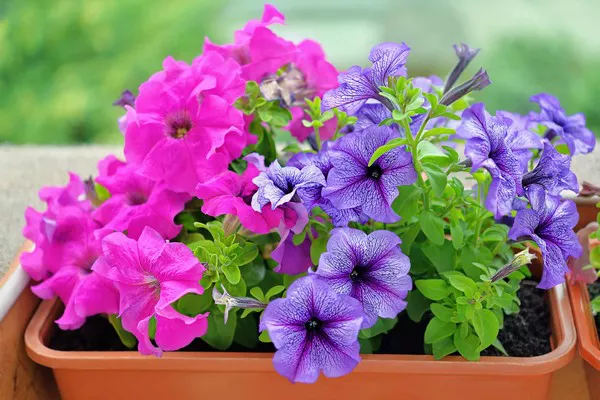Petunias are one of the most popular and versatile annual flowers, adorning gardens, balconies, and hanging baskets with their vibrant colors and delightful fragrance. Their ability to bloom profusely makes them a favorite among gardeners and plant enthusiasts. However, to enjoy an abundance of petunia blossoms, you need to provide the right care and attention. In this article, we will explore various strategies and techniques to make petunia flowers bloom more, ensuring a beautiful and colorful display throughout the growing season.
1. Select the Right Petunia Variety
Before delving into care practices, it’s essential to choose the right petunia variety for your specific growing conditions and preferences. There are two main types of petunias: grandiflora and multiflora.
Grandiflora Petunias: These have larger, showier flowers but are more susceptible to adverse weather conditions. They are excellent for containers and hanging baskets.
Multiflora Petunias: These produce smaller, but more abundant flowers and are generally more resilient to wind and rain. They are ideal for garden beds and borders.
Choose a variety that suits your climate, available space, and desired aesthetic.
2. Provide Adequate Sunlight
Petunias are sun-loving plants. To ensure abundant blooming, they require at least 6-8 hours of direct sunlight per day. Place them in a location where they can bask in the sun, such as a south or west-facing garden bed or hanging basket. If you’re growing petunias indoors, use grow lights to mimic natural sunlight.
3. Plant in Well-Draining Soil
Proper soil preparation is crucial for petunias. They thrive in well-draining soil with a slightly acidic to neutral pH (around 6.0 to 7.0). Amending the soil with organic matter, such as compost or peat moss, can improve drainage and fertility.
4. Adequate Spacing
Ensure proper spacing when planting petunias. Overcrowding can lead to poor air circulation, which can increase the risk of fungal diseases. Follow the spacing recommendations on the plant tag or seed packet for the specific variety you’re growing.
5. Watering Practices
Petunias have moderate water needs. Keep the soil consistently moist but not waterlogged. Water deeply when the top inch of soil feels dry to the touch. It’s best to water in the morning to allow foliage to dry before evening, reducing the risk of fungal issues. Avoid overhead watering, as wet foliage can invite diseases.
6. Fertilize Regularly
To encourage abundant flowering, provide your petunias with regular feeding. Use a balanced, water-soluble fertilizer, such as a 10-10-10 or 20-20-20 formula, every 2-4 weeks during the growing season. Avoid over-fertilization, as it can lead to excessive foliage growth at the expense of flowers.
7. Deadheading for Continuous Blooms
Deadheading is the practice of removing spent flowers. This encourages the plant to redirect energy into producing new blooms instead of setting seeds. Pinch or snip off faded flowers regularly to promote continuous blooming throughout the growing season.
8. Pruning and Pinching
In addition to deadheading, consider light pruning and pinching to shape and promote bushier growth in petunias. Pinch off the tips of young stems when the plant reaches about 6-8 inches in height. This encourages lateral branching and more flower buds.
9. Use Mulch
Applying a layer of organic mulch around your petunias helps conserve soil moisture, suppress weeds, and maintain a consistent soil temperature. However, avoid mulch directly touching the plant stems, as this can lead to rot and disease.
10. Pest and Disease Management
Keep an eye out for common pests like aphids, spider mites, and caterpillars, which can damage petunia plants and reduce flowering. Use natural remedies or insecticidal soap to manage infestations. Additionally, maintain good air circulation and avoid wetting the foliage to prevent fungal diseases like powdery mildew and botrytis.
11. Regular Pruning
To ensure your petunia plants remain healthy and produce an abundance of flowers, consider regular pruning. Trim back leggy growth and remove any damaged or diseased branches. This will promote a more compact and vigorous plant.
12. Temperature Considerations
Petunias are sensitive to extreme temperatures. If you live in an area with hot summers, consider providing some shade during the hottest part of the day to prevent stress and wilting. On the other hand, if you’re in a cooler climate, ensure they’re planted after the last frost date and protect them from late-season cold snaps.
13. Keep an Eye on Soil pH
Occasionally check the soil pH to ensure it remains within the ideal range for petunias. If the soil becomes too acidic or alkaline, it can affect nutrient uptake and overall plant health. Amend the soil as needed to maintain the appropriate pH level.
14. Regular Maintenance
Routine maintenance is key to a healthy and blooming petunia garden. This includes weeding, checking for signs of disease or pests, and adjusting watering and feeding schedules as needed.
15. Consider Companion Planting
Companion planting can be an effective strategy for enhancing petunia blooms. Plants like marigolds, geraniums, and lobelia can complement petunias and create a visually appealing garden while helping deter pests.
Conclusion
Growing abundant petunia flowers requires careful attention to their specific needs. By selecting the right variety, providing adequate sunlight, proper soil, and regular care, you can enjoy a profusion of colorful blooms from spring through fall. Remember to deadhead, fertilize, and manage pests and diseases to maintain a healthy and vibrant petunia garden. With these tips and techniques, you’ll be well on your way to a stunning display of petunia flowers that will brighten your outdoor space. Happy gardening!


